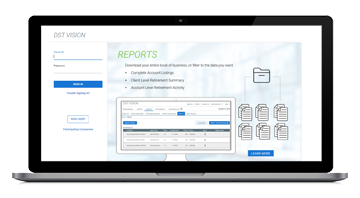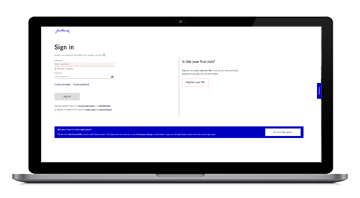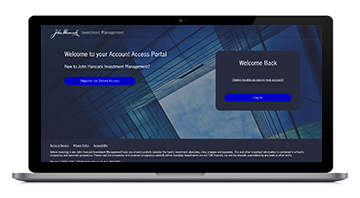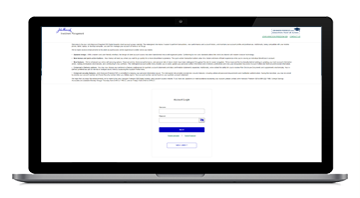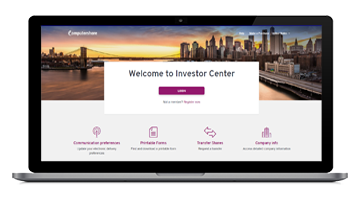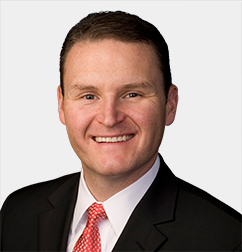Portfolio Intelligence podcast | Understanding active ETFs and ETF share classes
Active ETFs have witnessed significant growth in AUM in the past year,¹ and now the likelihood of an ETF share class has the potential to transform the asset management industry. What should investors consider in regard to this development? Steven L. Deroian, our head of asset allocation models and ETF strategy, joins the podcast to break down these investment vehicles.
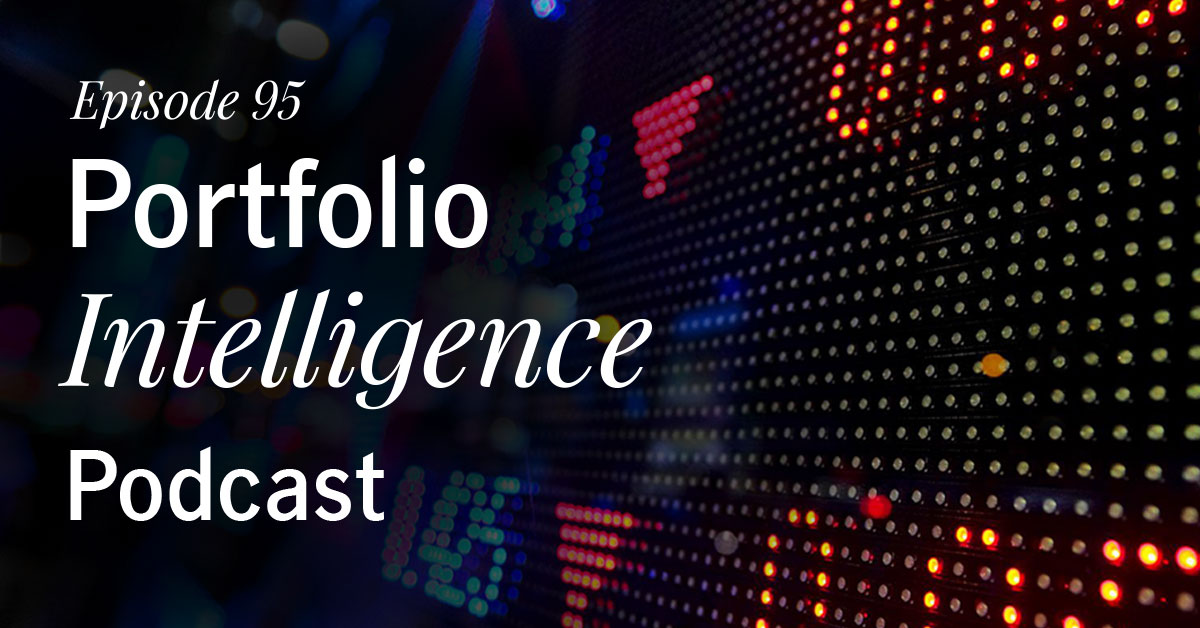
Subscribe: Spotify | Apple | Explore all Portfolio Intelligence podcasts
Active ETFs are gaining traction as a tool for alpha generation, while the potential for an ETF share class has come to the forefront in the past few months. Steve discusses considerations for investors looking to incorporate these investment options into their portfolios in this episode with podcast host John P. Bryson. Here’s an excerpt from the conversation:
1 What are active ETFs?
Steve: An active ETF combines the ETF wrapper with active management inside of a 40 Act product like a mutual fund, but in this case, the 40 Act product is the exchange-traded fund. It allows for intraday trading, transparency of underlying holdings, and tax efficiency, with the potential to outperform a market or a benchmark.
2 What should investors consider while picking an active ETF that’s right for them?
Steve: Investors should consider the track record and trustworthiness of the active manager, understanding what the fund aims to accomplish. They should consider the underlying investments within the ETF and how that relates to pricing. There's always a spread, like when you buy a stock, so you want to understand how wide the spread is, your cost of acquisition, and if you have to pay a commission.
3 What is an ETF share class?
Steve: An ETF share class is an additional share class of a traditional mutual fund, similar to an A or I share class, but in an ETF wrapper. It allows for an ETF to be linked to an already established mutual fund with a track record, offering benefits like instant scale and historical performance. This setup can provide lower overall expenses and more tax efficiency due to the structure of ETFs.
About the Portfolio Intelligence podcast
The Portfolio Intelligence podcast features interviews with asset allocation experts, portfolio construction specialists, and investment veterans from across Manulife John Hancock’s multimanager network. Hosted by John P. Bryson, head of investment consulting at Manulife John Hancock Investments, the dynamic discussion explores ideas advisors can use today to build their business while helping their clients pursue better investment outcomes.
1 “ETFs 2029: The path to $30 trillion,” PwC, 3/4/25.
Important disclosures
Important disclosures
This podcast is being brought to you by John Hancock Investment Management Distributors LLC, member FINRA, SIPC. The views and opinions expressed in this podcast are those of the speakers, are subject to change as market and other conditions warrant, and do not constitute investment advice or a recommendation regarding any specific product or security. There is no guarantee that any investment strategy discussed will be successful or achieve any particular level of results. Any economic or market performance information is historical and is not indicative of future results, and no forecasts are guaranteed. Investing involves risks, including the potential loss of principal
JHS-764324-2025-07-03
Transcript
Transcript
John
Hello and welcome to the Portfolio Intelligence podcast. I'm your host, John Bryson, head, investment consulting and education services at Manulife John Hancock Investments. Today is June 24, 2025. As always, the goal of this podcast is to help investment professionals deliver better outcomes for their clients and their practice.
With that in mind, I'd like to talk about an investment option that has seen rapid acceleration in the number of options offered in an AUM, and another option that's attracting headlines and offering similar growth potential.
Those options are active ETFs and ETF share classes. To discuss these, I've invited Steve Deroian, global head of exchange traded products and models at Manulife John Hancock Investments to the podcast. Welcome, Steve.
Steve
Thanks for having me, John.
John
You got it. Hey, Steve, as I mentioned, the number of active ETFs has exploded in the marketplace. Can you tell us what they are, what's driving that growth?
Steve
Yeah. I mean, first and foremost, an active ETF is just a lovely marriage of two things that we're already pretty darn familiar with. One is the ETF wrapper. So you have an exchange traded fund. We've been, you know, playing in that sandbox for quite a while now ... since you know ... the ETFs are about 34 years old now. So, that piece is not new. And then active management inside of a 40 Act product like a mutual fund. But in this case, the 40 Act product is the exchange traded fund. So, it's just an actively managed portfolio inside of an ETF wrapper. So, what's great about it is, it sort of takes what I think a lot of people see as the best of both worlds and puts it into one solution.
The ETF wrapper generally is, been looked at over the last 15 years in particular to be an interesting addition to most people's portfolio. It allows for the intraday trading. It allows for transparency of the underlying holdings. It allows for a more tax efficient experience. For those of you holding it inside of a taxable account. And then you add in the ability to potentially outpace a market or a benchmark, when you look at historical ETFs, many of them as we started out. And I've been doing this for almost 20 years now, John, in the ETF space and almost all of them back then were passive vehicles.
As time has gone on, we've seen a tremendous amount of growth. Over the last three years we've seen about 1,200 new active ETFs. And just last year alone, you know, I think we saw about 450 new active ETFs. So, it's really been a growth engine in terms of product. And then from an AUM perspective, when you look at globally, active ETFs now represent about $1.1 trillion in global assets.
And that's a … it's a pretty high increase over the last several years in particular, about a 50% growth just last year alone. So, it's been a … it's been a great growth story.
John
Wow. Impressive. So, Steve, if someone's interested in this, how should an investor go about picking which active ETF is right for them?
Steve
Well, again John, as I mentioned, when we think about the products themselves, one element is understanding how do I pick and choose an ETF and then the second element or leg would be how do I pick an actively managed product. And so, the two pieces that I usually think about, let's start with maybe what's, what's easier for folks that have been in this business for a long time picking an active manager, right? So, it's … it's the same story, man. It's … it's, do I know and trust the people running the fund? Do I have a historical evidence that the people who are running this one can actually outperform or even just maybe deliver on what they promise, right. Sometimes people think of outperformance as the only objective of a fund, and sometimes it's not about outperformance. It might be about safety. It might be about hitting a particular income benchmark, if you will.
So, you know, understanding what the fund is trying to accomplish and what it's trying to do. I think another element, as always, you have to understand price. But I think about price a little bit differently these days. I think, you know, my mom always said you usually get what you pay for. And, when I think about that, I do think about price in terms of value.
And so if, if a manager can deliver alpha, if they can deliver on their income targets, if they can deliver on the protection that they're trying to acquire for you, then I think it's really incumbent upon you to say—you know what? That is worth something. There is a value there. And just getting the lowest cost, provider isn't always in your best interest as an individual investor or as an advisor for your clients.
So, I think, like, step one is like the traditional active manager. Step two is how do we think about an ETF. And, and I think, this may be newer to some people or maybe you haven't even done it at all.
But when you look at an and an ETF, there's a, there's a couple of things that you should probably look at. One is the underlying investments that make up the ETF and how that relates to the pricing you receive. So, as I mentioned earlier, ETFs are traded intraday and they're treated on an exchange. So, unlike a traditional 40 Act mutual fund where you just get the end of day pricing, you get a NAV price and you get it at 4 o’clock—you can buy and sell your ETF throughout the course of the day. If you do that you're doing … or when you do that, I should say, you're doing it at a market price that's dictated by, the market makers or brokers who buy and sell on your behalf through the exchange.
And so what you want to make sure you understand is, there's always a spread, like when you buy a stock, there's always a spread. Same deal here. So you just want to understand how wide is that spread? What's my cost of acquisition? Do I personally have a commission to pay? Some platforms charge you a commission, some do not. So, understanding what your platform is and how it works. And then I think lastly, on the ETF side is just understanding the idea that sometimes you can see an ETF if you wanted to buy a large position in this ETF you might not see a lot of shares that are trading on a given day. Because a lot of these active ETFs they're buying hold, right. They're not really trading vehicles. And so, understanding that the liquidity of the ETF is really based upon the underlying holdings is a key element. So if you put a large order in, as long as you do it correctly and you work with your platform, usually using limit orders, staying away from the open or the close of the day, what you'll find is that you can oftentimes on a large order, get an even better price because your block desk will go and, and, deliver to you an improved price because of the size that you're willing to buy.
So just understanding some of those nuances of an ETF is super helpful. And, you know, our firm and whatever firm you deal with usually has folks that can help you out. We certainly have a great capital markets team that can help anyone that's wanting to understand that more.
John
All right. It's really helpful. Steve. I think if I were to summarize, I would say it's an investment vehicle that offers the best of both worlds, whether it's active management in an ETF wrapper that provides transparency, tax efficiency, liquidity. However, know the details of the product that you're offering, because there are some nuances you want to be familiar with … if you're getting … if you're new to the ETF in the active ETF space.
So, let's pivot a little bit. I mentioned, we saw a lot of growth in active ETFs. And we've seen a lot of headlines and interest in ETFs share classes. Tell us what the ETF share class is and how you think Manulife John Hancock Investments may participate in that space.
Steve
Yeah, it's a great question, John. And it's really something that's kind of come to the forefront. Really since the administration change in particular. A little over two years ago, really, some firms started to put in what's called an exemptive relief request or order to allow them to do what one firm today is doing, which is just paying a share class off of a standard traditional mutual fund.
So those of us who have been in the industry know there are different share classes in mutual funds. You may be familiar with the A share class or the I share class. And in the case of ETFs, historically, there really hasn't been the same flexibility to just add a share class to a standard mutual fund. For some of the reasons that we've always described, they kind of work a little bit differently, right? With the ability to buy on the exchange versus buying at the end of the day, the transparency of the ETF versus what is traditionally a non-transparent product in the active mutual fund space.
So it's a little, it's been a little difficult to get people to say like, hey, I think we can get to this space where a fund complex, as I like to call it, could have an I share class and A share class and what we are kind of internally here calling an E share class, right, an ETF share class.
And so what's happened over the last, I would say six months in particular, is we've really seen a shift with the SEC and we've seen them engaging in approving these exempt relief orders. We, along with over 60 other asset managers like us, have put in the request to allow us to hang a share class of an already established mutual fund with a with a track record, a history and scale.
And so, the benefits to an ETF, starting out, are real. Right. And what I mean by that is when you think of an already established mutual fund of, you know, billions of dollars potentially, you think of scale that you get with lower cost when it relates to other expenses like legal cost or custody costs, right? The ETF can be hung off of that same entity and have lower overall expenses. Secondly, you have a track record that's already been built, right, this is going to be run in an identical way. This is the same fund. It's just inside of an ETF wrapper.
So, you get the long-term track record. Some of the things we talked about at the beginning where you have someone who's got a history and you have credibility as an investor and as a buyer of that investor to say—hey, this is a person or group of people that I know and trust. I'd like to participate in the wrapper of the ETF that I really like. Because I like the intraday action, let's say.
And then lastly, I think what we'd say about kind of this concept is historically the ETF has been only launched in a standalone vehicle. And so, because of that, all of these things that we talked about, the instant scale historical track record and flexibility, have been a detriment. And you've had to sort of like, trudge up the hill in a new vehicle, even though you may have a very similar, strategy, but it's got to be different because it's not the same.
And so what we found is that being able to participate in something like this could really benefit not only our company, let's be honest, like there's going to be a benefit there because we're going to get scale and we can get people working, you know, kind of rolling in the same direction on the same fund, but also the end clients on both the mutual fund and the ETFs side.
Because ETFs have this interesting feature on tax efficiency, the having a share class that's dedicated to the ETF wrapper through redemptions and kind, we can make a more efficient tax process for everyone. And so that's one of the benefits that, that we'll see, for the mutual fund shareholder is that they will definitely see a more tax efficient vehicle. And the ETF will have benefits around scale and efficiency right away. And so that's the process.
To answer the second part of your question, John, around, what will we be doing? So we've been, a reasonably early adopter to this, you know, where in the first half of firms that have have filed and we continue to refile, you know, to get into the minutia, but we continue to work with the exchange, excuse me, with the commission and, really try to develop whatever, requirements that they will have for us to be able to add this share class.
What I will say is—there are some hurdles along the way, as you would expect with any new technology, for lack of a better term. The biggest is we have, the melding of some of these complex issues around, you know, having a brokerage relationship with an ETF and maybe not having a brokerage relationship with a mutual fund, because you can own that directly through your mutual fund company, for example.
And so there's different custody, arrangements that need to be worked out. There's also the idea of this ability to exchange from one share class to another. This conversion, if you will, has not been fully kind of baked out to figure out exactly how that conversion will happen. So there's definitely hurdles I think just so like those our listeners can understand what you'll probably see is approval for hopefully most of us or all of us that have put in our request. And then I think you'll see six, nine, maybe even 12 months of development that has got to happen internally at the mutual fund companies and at the brokerage companies to be able to actually deliver this share class in a meaningful way to advisors and clients. So, at the end of the day, I think it's an amazing step for our industry because I think it will kind of continue to level the playing field, if you will, for everybody.
However, you know, this is not a sprint. It's definitely more of a of at least a half marathon, John. Maybe a full marathon, I don't know, I don't run … so, as you know … so, all I know is anything more than 100 yards and I'm out for the count, so. But we're going to run this marathon together, I think.
John
I think a marathon is the right analogy. All right. Well, Steve, I want to thank you for joining in telling what we're always trying to bring fresh ideas to the marketplace. I absolutely think that the active ETF space is something investors should explore. We're always here, financial advisors are there for the end client. We're always here. If anyone is interested in learning more, we want to help educate.
And as the ETF share class space evolves, I'd love to have you back, Steve. And you can tell us about the new developments that are happening in that space over the next 12 months, to that marathon analogy that you used. So, Steve, thanks for joining the podcast. I appreciate it.
To our listeners. If you want to hear more, please subscribe to the Portfolio Intelligent Podcast on iTunes or visit our website, jhinvestments.com. You can find a bunch of information around ETFs, other investment vehicles, business building ideas and much, much more. As always, thanks for listening to the show.
John
John Hancock ETFs are distributed by Foreside Fund Services LLC in the United States, and are sub advised by Boston Partners, Dimensional Fund Advisors LP, Marathon Asset Management, or our affiliate Manulife Investment Management (US) LLC. Foreside is not affiliated with John Hancock Investment Management Distributors LLC, Manulife Investment Management (US) LLC, Boston Partners, Dimensional Fund Advisors LP, or Marathon Asset Management.
